✓ Handpicked Luxury Stays in Budget on 🏡 booking.com
com/landmarks/oceania-landmarks/landmarks-of-australia/”>landmarks in Africa, you’d know there are quite a few of them are here in Tunisia.
Tunisia, a jewel of North Africa, is home to breathtaking landmarks that stand as testaments to the country’s rich history and vibrant culture.
From the ancient ruins of Carthage to the stunning mosaic art of Bardo Museum, Tunisia’s landmarks are a treasure trove of stories waiting to be discovered.
These landmarks breathe life into the past, guiding visitors through the nation’s intricate tapestry of civilization and art.
1. Carthage
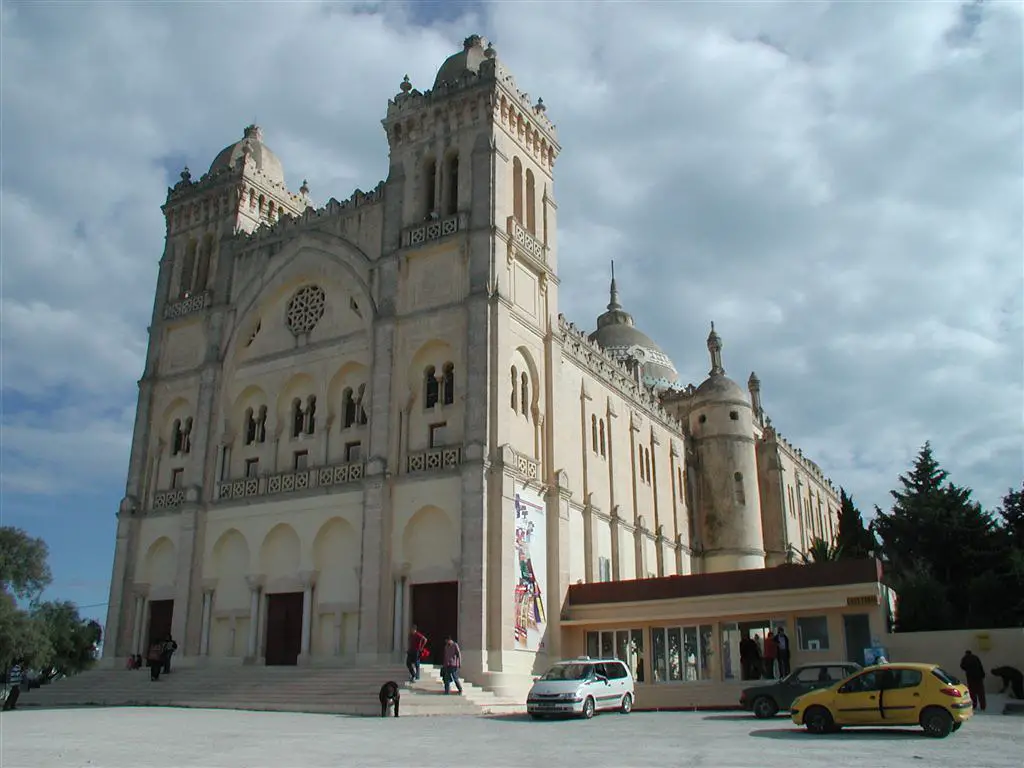
Ancient city and UNESCO World Heritage Site located in Tunis, Tunisia.
What to see or do: Visit the Punic ports, the Antonine Baths, and the Carthage National Museum to see ancient artifacts. Explore the Byrsa Hill and the Tophet, where ancient sacrifices were made.
Take a stroll through the picturesque streets of the village of Sidi Bou Said, famous for its white and blue architecture.
Don’t miss: The Roman Amphitheatre, which sits atop a hill overlooking the city and offers breathtaking views of the Mediterranean Sea.
Insider travel tips: Wear comfortable shoes and bring sunscreen, as the site is spread out and requires walking. Take a guided tour to fully appreciate the site’s historical and cultural significance.
Consider visiting during the off-season to avoid crowds and enjoy a more intimate experience.
2. Amphitheatre of El Jem
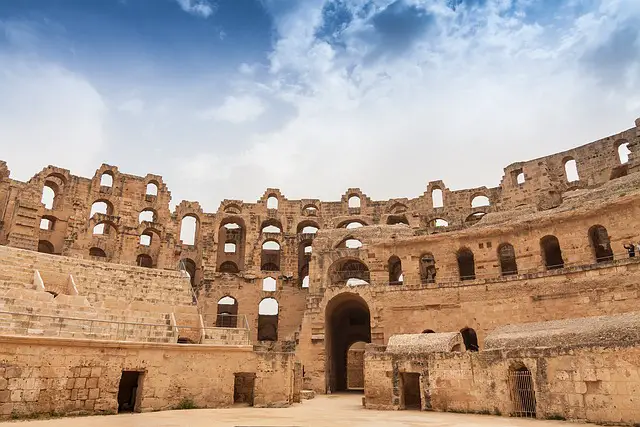
A UNESCO World Heritage site, and the largest Roman amphitheatre in Africa.
What to see or do: Stand in the middle of the arena and imagine the gladiatorial games that took place over 1,800 years ago. Explore the underground chambers where animals and gladiators waited before appearing in the arena.
Admire the impressive views of the surrounding countryside from the top of the amphitheatre.
Don’t miss: The El Jem Museum, which houses mosaics and statues found at the amphitheatre site.
Insider travel tips: Visit in the morning to avoid the crowds and heat. Consider hiring a guide to learn about the history and significance of the site.
Bring plenty of water and wear comfortable shoes for walking on the ancient stones.
3. Medina of Tunis
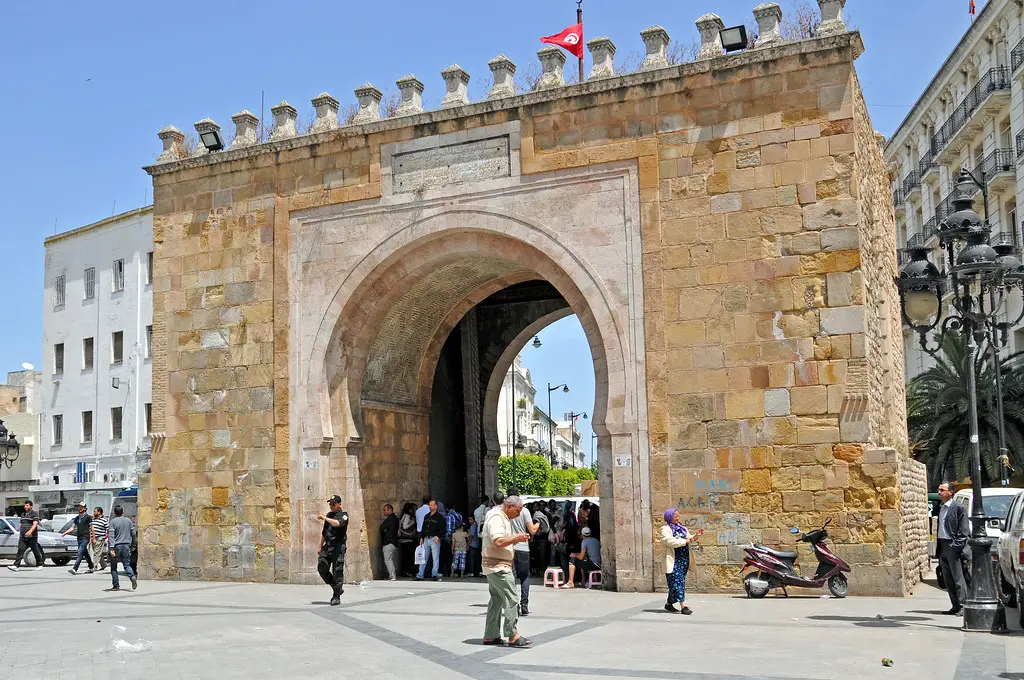
The Medina of Tunis, also known as the Old Town of Tunis, is the historic heart of the Tunisian capital. It is a UNESCO World Heritage site and one of the best-preserved Islamic cities in the world.
What to see or do: Strolling through the winding streets of the Medina is like taking a step back in time.
Visitors can admire a myriad of impressive historical landmarks, including the magnificent Zitouna Mosque, the Dar Ben Abdallah Museum, and the Palace of Dar Hussein.
Don’t miss: The Souks of the Medina are a must-see.
From the bustling marketplaces of the Rue des Teinturiers to the historic souks of Birka and Chouachiya, shoppers can find everything from traditional Tunisian clothing and ceramics to spices, jewelry, and souvenirs.
Insider travel tips: Visitors should set aside at least half a day to explore the Medina and wear comfortable shoes.
It is also recommended to hire a local guide who can provide insight into the fascinating history and culture of this ancient city.
Plus, don’t forget to bargain when shopping in the Souks!
4. Bardo National Museum
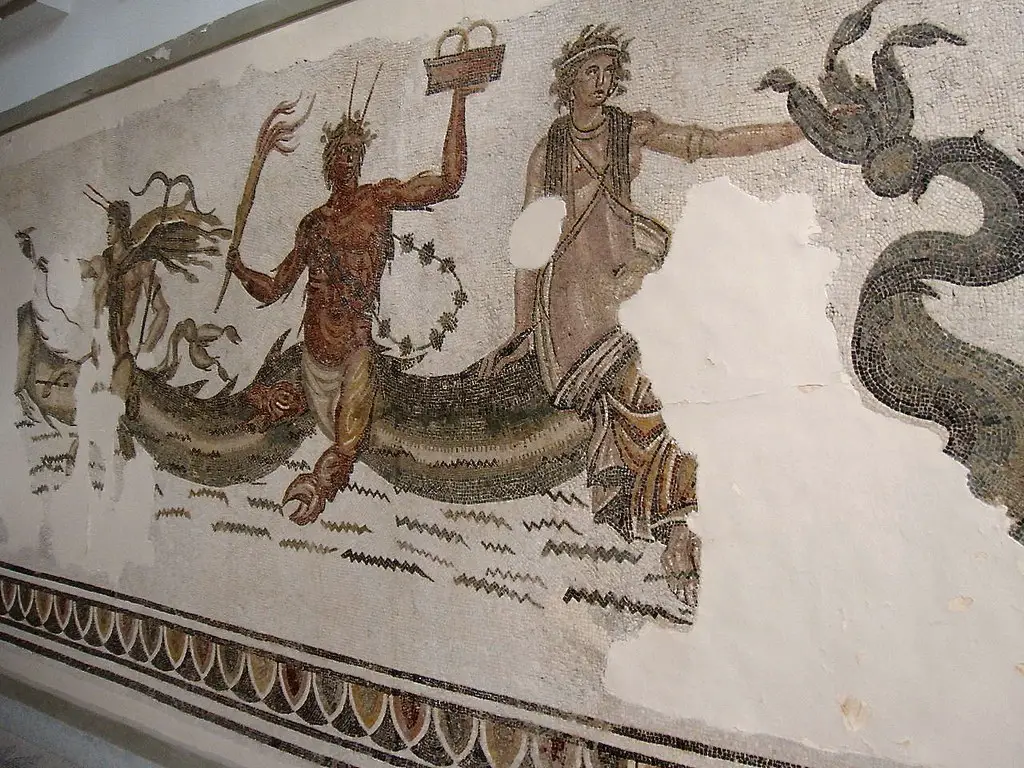
The Bardo National Museum in Tunis is one of the largest museums in North Africa, dedicated to showcasing the country’s archaeological heritage.
What to see or do: Visitors can see a vast collection of precious mosaics, sculptures, pottery, and other artistic artefacts from the Punic, Roman, Early Christian, and Islamic periods in Tunisia.
Don’t miss: The Bardo National Museum’s most renowned exhibit is the incredible collection of Roman-era mosaics, including the stunning “Triumph of Neptune” that depicts the sea god being pulled by seahorses.
Insider travel tips: – The museum can get crowded, so try to visit early in the morning or late in the afternoon.
5. Sidi Bou Said
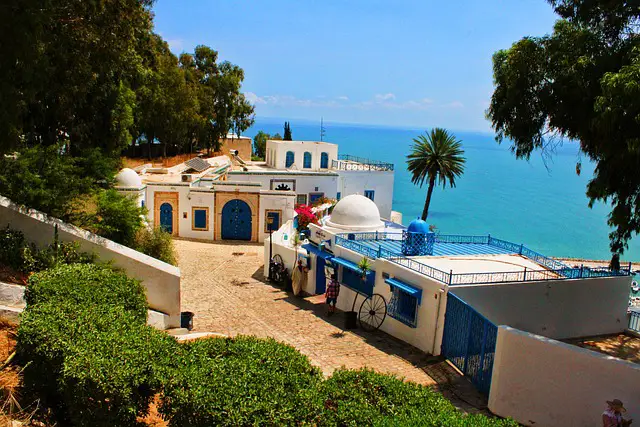
A charming hillside village in Tunisia, known for its blue and white painted buildings and stunning views of the Mediterranean Sea.
What to see or do: Stroll through the winding cobblestone streets, admire the traditional architecture, and take in the breathtaking panoramic views from the cliff-top cafes.
There are also several art galleries showcasing local talent, as well as souvenir shops selling traditional Tunisian crafts.
Don’t miss: The iconic blue and white striped lighthouse, which is a symbol of the village and offers incredible views of the surrounding area.
The town square is also a must-see, with its picturesque fountain and bustling atmosphere.
Insider travel tips: Try to visit during off-peak hours to avoid the crowds. Take some time to explore the lesser-known side streets and alleyways, as they often hold some hidden gems.
Also, don’t be afraid to haggle when shopping in the souks!
6. Ribat of Monastir
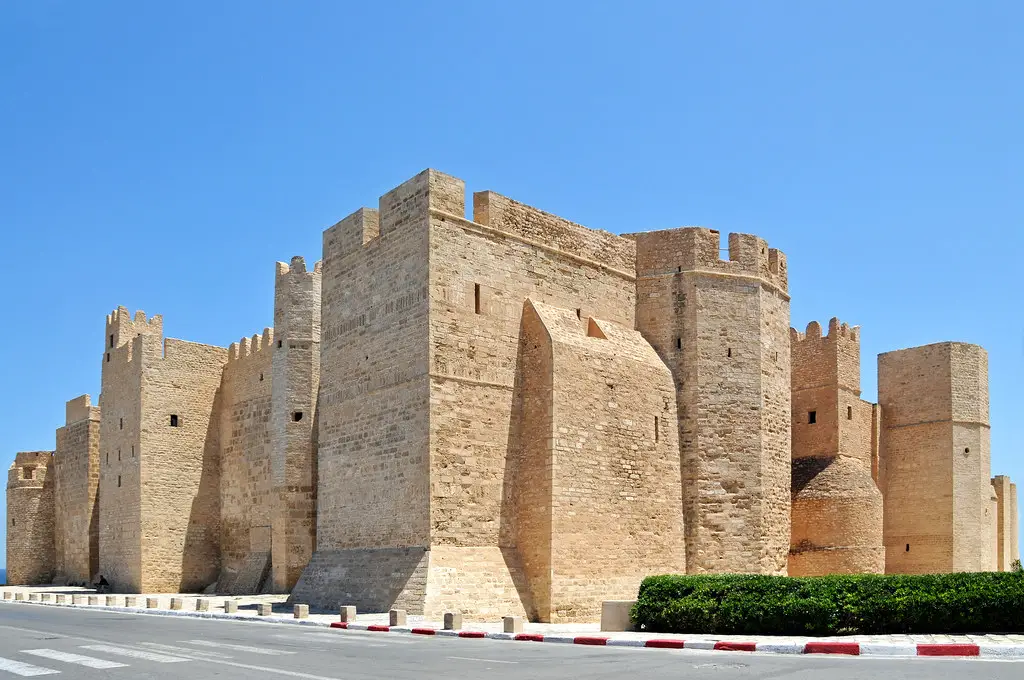
A well-preserved Islamic fortification built during the 8th century.
What to see or do: Explore the impressive complex, comprising a mosque, a courtyard, and watchtowers. Admire the intricate architectural designs and take in the stunning views of the Mediterranean Sea.
Don’t miss: The small museum showcasing artifacts and exhibits related to the Ribat’s history.
Insider travel tips: Visit early in the morning or late in the afternoon to avoid the crowds and the scorching heat. Wear comfortable shoes as there are plenty of stairs to climb.
7. Great Mosque of Kairouan
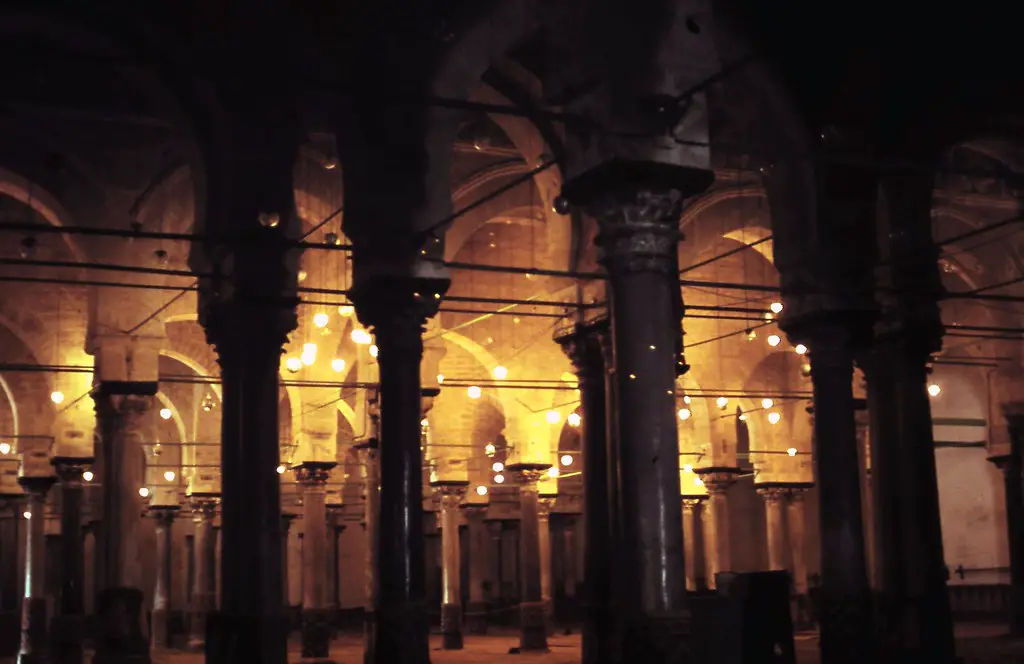
Considered as one of the most important Islamic landmarks in North Africa, the Great Mosque of Kairouan is a UNESCO World Heritage Site located in Kairouan, Tunisia.
What to see or do: Visitors to the Great Mosque of Kairouan can explore the impressive architecture of the mosque, featuring intricate designs and calligraphy carved into the walls.
Admire the green-tiled roof, the ornate minaret, and the courtyards surrounded by arched porticoes.
Don’t miss: Don’t miss the opportunity to climb to the top of the minaret to enjoy a fantastic view of the city. Be sure to check out the prayer hall, which boasts a strikingly beautiful dome.
Insider travel tips: Be sure to dress appropriately when visiting the Great Mosque of Kairouan, which is still an active place of worship. It’s also recommended to visit early in the morning or later in the afternoon to avoid the crowds.
Additionally, visitors should be respectful and avoid taking photos during prayer times.
8. Dougga
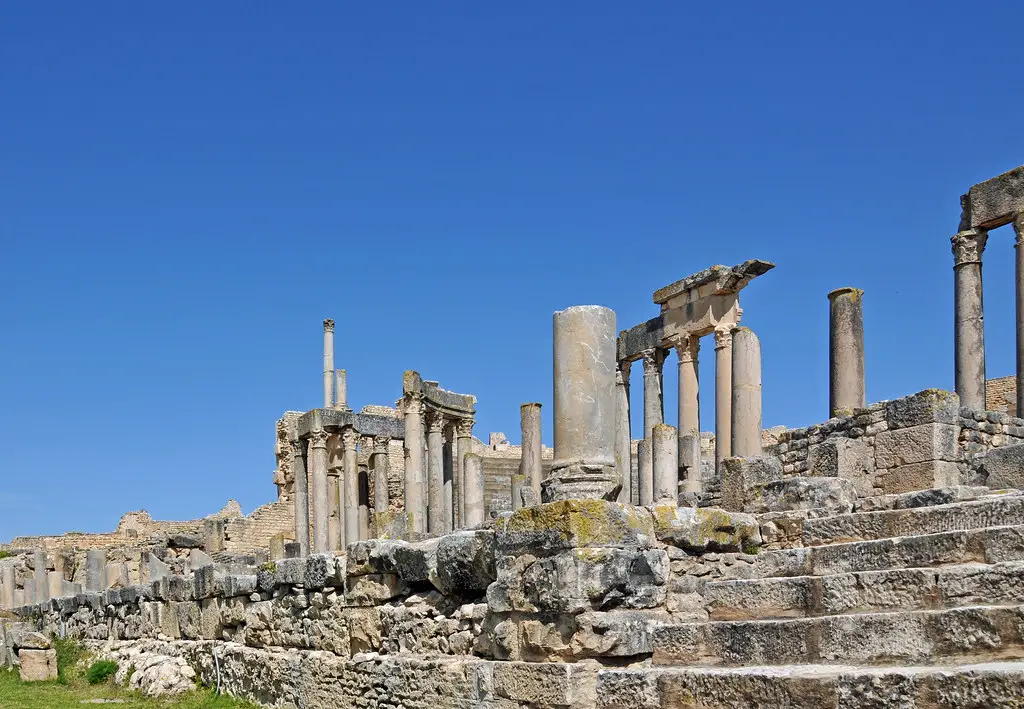
an ancient Roman city located in Tunisia with a well-preserved collection of ruins.
What to see or do: Take a stroll through the well-preserved ruins of the Roman city which include a theater, temples, baths, and an impressive collection of mosaics.
Visit the House of Trifolium, a beautifully decorated Roman villa, and the Dougga Museum, which houses a collection of ancient artifacts found on-site.
Don’t miss: The Temple of Saturn, with its impressive columns and beautiful views of the surrounding countryside. The Capitol, a temple dedicated to the goddess Ceres, is also worth visiting for its stunning architecture.
Insider travel tips: Plan to arrive early in the morning to avoid the crowds and the heat. Wear comfortable shoes as the site is quite large and requires a fair amount of walking.
Don’t forget to bring a hat, sunscreen, and water.
If you have the time, consider visiting the nearby Zaghouan Roman Water Temple, which is also a fascinating site to explore.
9. Medina of Sousse
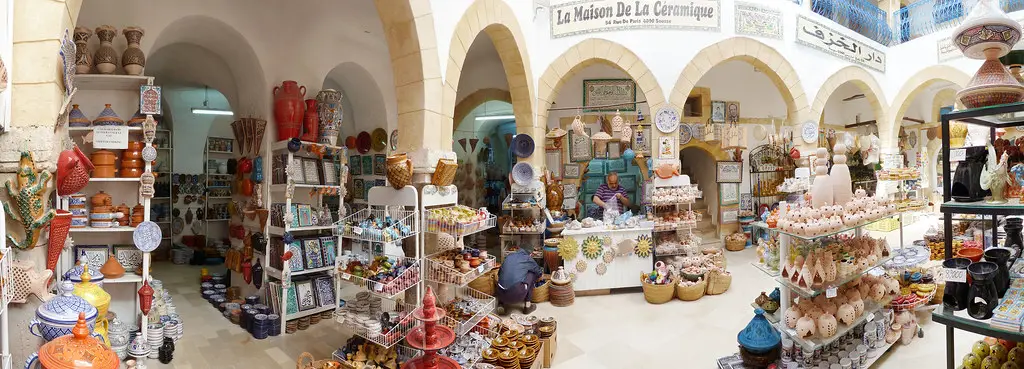
The Medina of Sousse is a UNESCO World Heritage site located in the city of Sousse, Tunisia. It is one of the best-preserved examples of an Islamic walled city in North Africa.
What to see or do:
Don’t miss: – The Ribat of Sousse, a fortified monastery that was built in the 8th century for the protection of the city.
It is now home to a museum that displays a collection of arms, costumes and traditional crafts.
Insider travel tips: – Wear comfortable shoes as the streets are narrow, uneven and cobbled.
10. Kasbah of Hammamet

The Kasbah of Hammamet is a historic fortress located in the heart of the city of Hammamet, Tunisia.
What to see or do: Visitors can explore the ancient architecture and marvel at the intricate details and stunning views from the top of the fortress.
The Kasbah also houses a museum which showcases traditional Tunisian arts and crafts.
Don’t miss: Make sure to take a stroll through the charming narrow streets and alleys surrounding the Kasbah, which are filled with shops, cafes and restaurants offering local cuisine and handicrafts.
Insider travel tips: – Visit early in the morning or in the late afternoon, when the temperature is cooler and the crowds are thinner.
11. Medina of Kairouan
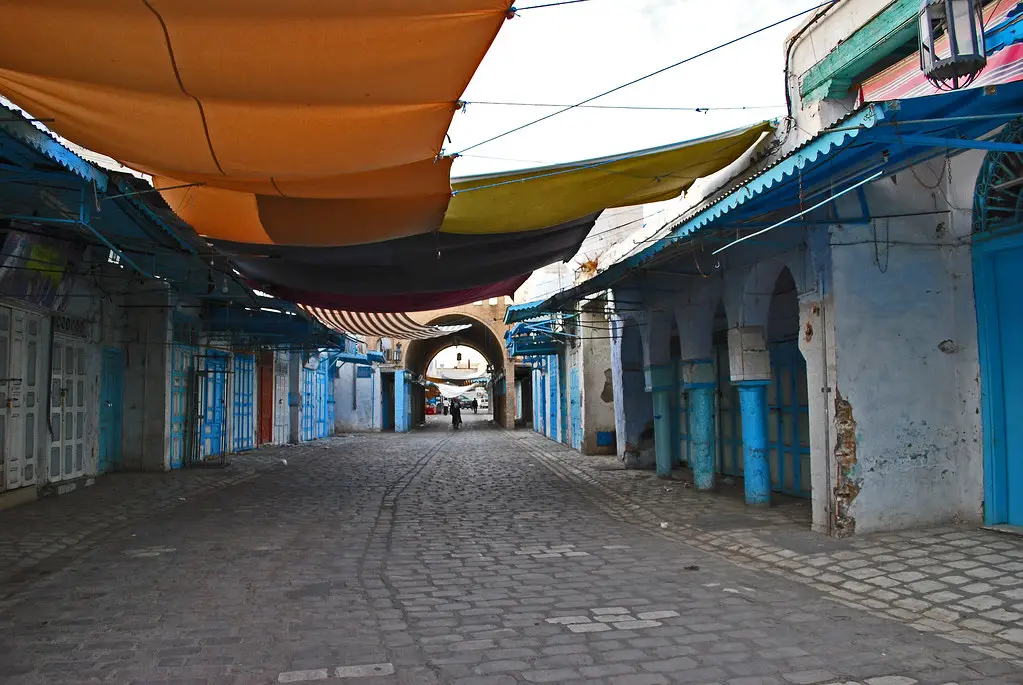
The Medina of Kairouan is a UNESCO World Heritage Site located in the city of Kairouan, Tunisia. It’s considered one of the most important Islamic sites in North Africa.
What to see or do: Visitors can wander the labyrinthine streets to explore the beautiful architecture of the ancient buildings, browse the shops and markets for traditional goods, and visit the numerous mosques.
Don’t miss: Don’t miss the opportunity to visit the Great Mosque of Kairouan. It’s one of the oldest mosques in the world, dating back to the 9th century.
Visitors can admire the intricate geometric patterns and the beautiful calligraphy on the walls.
Insider travel tips: – The best time to visit is during the spring or fall when the weather is mild.
12. Ruins of Thuburbo Majus
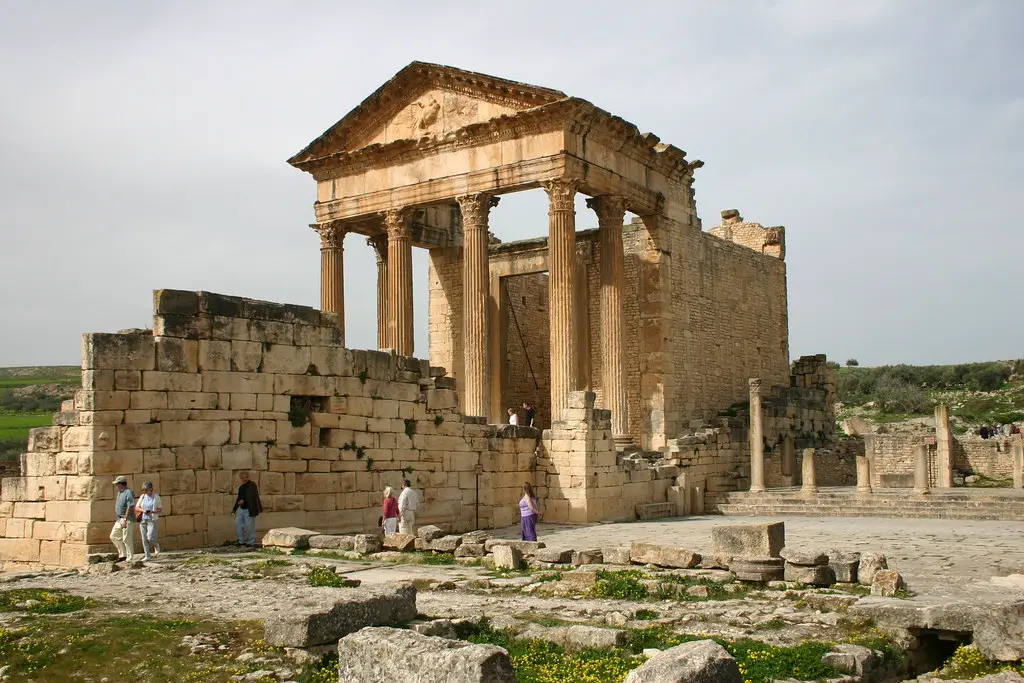
What to see or do:
Don’t miss:
Insider travel tips: Bring sunscreen and a hat, as there is little shade on site. Also, consider hiring a local guide to learn more about the history and significance of the ruins.
13. Dar Ben Abdallah Museum

The Dar Ben Abdallah Museum is a beautifully restored historic house located in the heart of the medina of Tunis.
What to see or do: The museum collection offers visitors a glimpse into the traditional Tunisian lifestyle. You can expect to see a wonderful collection of artifacts, ceramics, textiles, and jewelry.
The house is an excellent example of the traditional architecture of the Tunisian capital with its Roman pillars, beautiful courtyards, and stunningly decorated rooms.
Don’t miss: Be sure not to miss the impressive collection of pottery and ceramics, showcasing some of the finest examples of Tunisian ceramics from the 17th to the 19th century.
Insider travel tips: To fully appreciate the beauty of this historical house, take a guided tour or hire a knowledgeable local guide. The museum is open daily, and the entrance fee is quite reasonable.
Plan your visit in the morning when the crowds are lighter, and you can have a more intimate experience.
14. Kasbah of Sfax
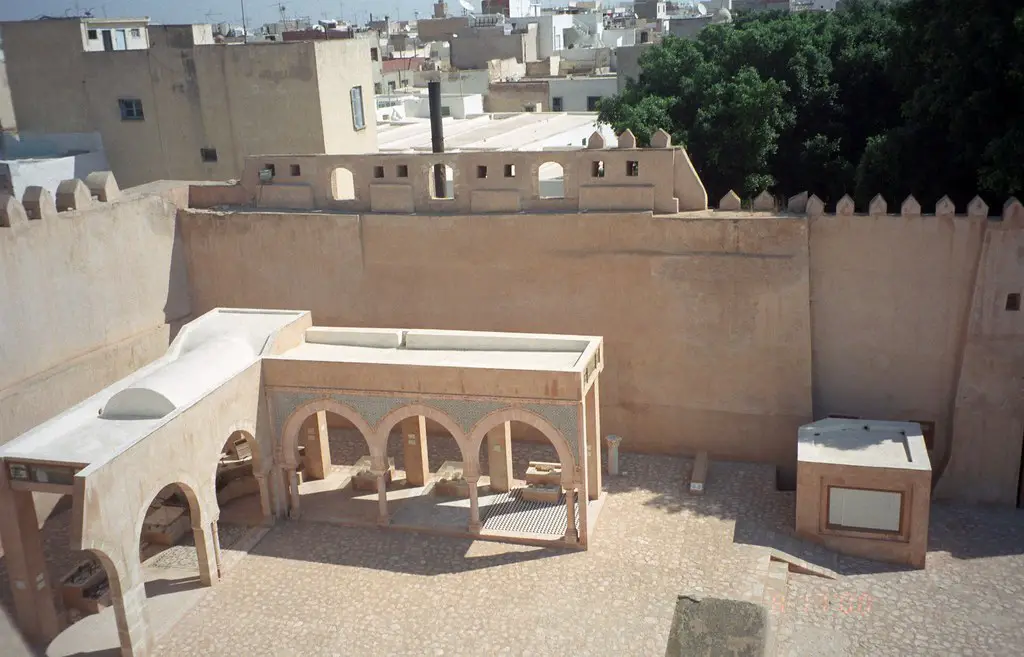
The Kasbah of Sfax is a fortified citadel situated in the heart of the city of Sfax, Tunisia. It was built in the 9th century and has undergone several renovations and transformations throughout history.
What to see or do: Visitors can explore the narrow alleys and winding streets of the Kasbah, which offer a glimpse into the traditional way of life in Sfax.
The Kasbah also houses several museums, including the Dar Jellouli Museum and the Museum of Traditional Costumes.
Don’t miss: The viewpoint at the top of the Kasbah provides stunning views of the city of Sfax and the Mediterranean Sea. The Great Mosque of Sfax, located just outside the Kasbah, is also worth a visit.
Insider travel tips: Wear comfortable shoes as the alleys and streets of the Kasbah are uneven and can be steep in some areas.
15. Mausoleum of Bourguiba
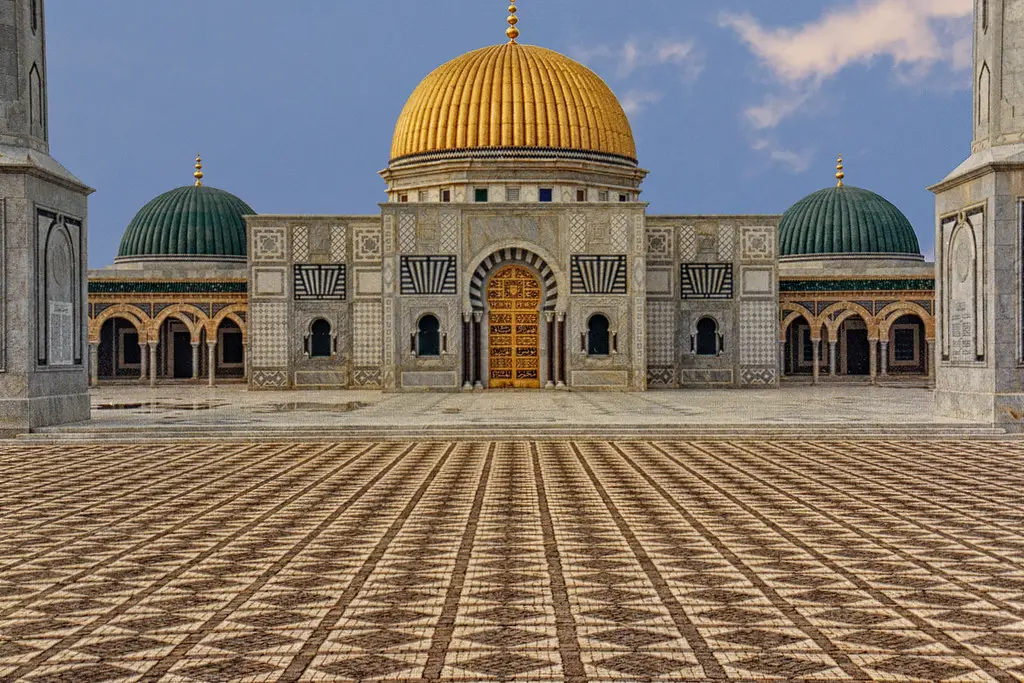
The Mausoleum of Bourguiba is the monumental burial place of the renowned first president of Tunisia, Habib Bourguiba.
What to see or do: The mausoleum boasts grandiose architecture that is worth seeing. It features a cylindrical glass monument that stands over the tomb of the former head of state.
Visitors can also take a look at the museum inside the complex, which houses various memorabilia and historical items associated with Bourguiba’s life and presidency.
Don’t miss: A visit to the grave of Bourguiba, which serves as the centerpiece of the mausoleum. The glass edifice above it is beautifully lit at night-time, making it a sight to behold.
Insider travel tips: – The mausoleum is open all year round, except during the month of Ramadan.
16. Medina of Mahdia
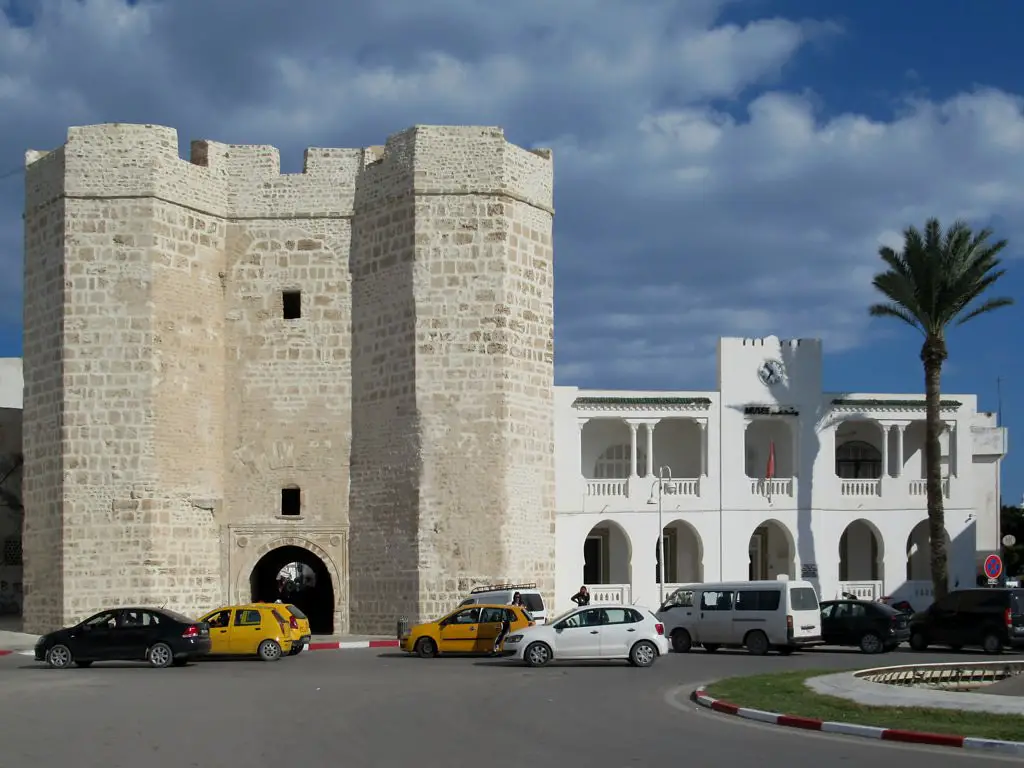
The Medina of Mahdia is a historic walled city located on the eastern coast of Tunisia.
What to see or do: Visitors can explore the narrow streets and alleyways of the Medina, admiring the traditional architecture and vibrant colors.
The Great Mosque of Mahdia, the oldest mosque in the city, is also located within the Medina and is a popular attraction.
Don’t miss: The fish market, located at the entrance of the Medina near the harbor, is a must-visit for seafood lovers. Visitors can also take a stroll along the beach and enjoy the beautiful views of the Mediterranean Sea.
Insider travel tips: Try to visit the Medina early in the morning to avoid the crowds and enjoy the peaceful atmosphere. It’s also a good idea to dress conservatively out of respect for the local culture.
If you have time, consider taking a boat ride from the harbor to see the city from a different perspective.
17. Kasbah of Monastir

A fortified historic complex located in the city of Monastir, Tunisia.
What to see or do: Explore the maze-like streets of the kasbah and its ancient architecture, which includes traditional white and blue painted houses with latticework balconies and ornate doorways.
Visit the 8th-century Ribat fortress, which is the oldest and most important building in the complex. Admire the views of the Mediterranean Sea and the city from the hilltop.
Don’t miss: The Musee du Costume Traditionnel and the Islamic Art Museum, both located within the kasbah.
Insider travel tips: Get there early to avoid the crowds and the heat. Wear comfortable shoes as some of the streets are steep and uneven.
Bargaining is expected in the kasbah’s souvenir shops, so don’t be afraid to haggle for a better price.
18. Medina of Gabes
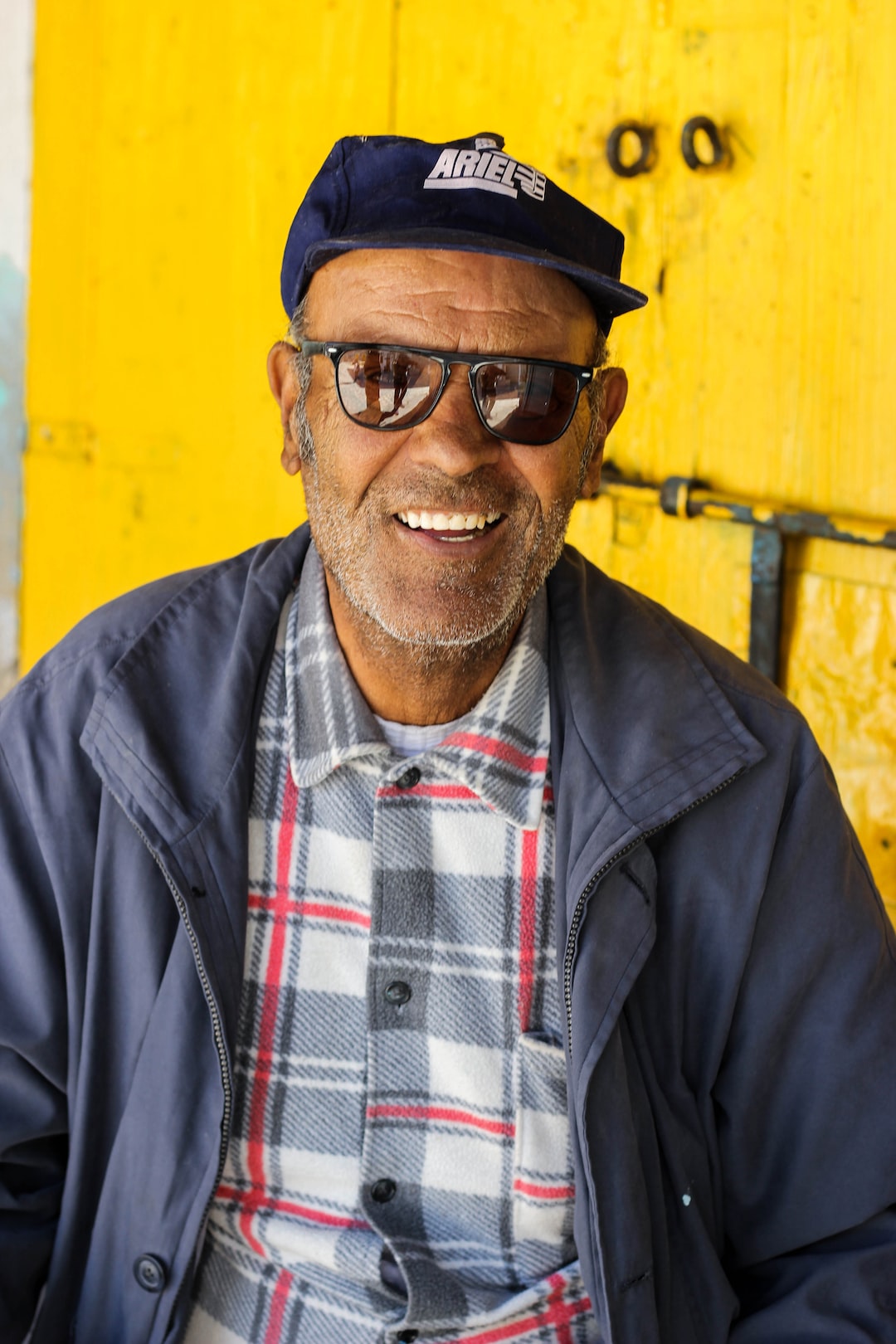
The Medina of Gabes is a UNESCO World Heritage site located in the heart of the city of Gabes in Tunisia.
What to see or do: Visitors can explore the narrow streets and alleys of the Medina, which are lined with traditional whitewashed houses and shops selling a variety of items like spices, textiles, and pottery.
You can also visit the local souq (market), which is a bustling hub of activity where you can find anything from handcrafted goods to fresh produce.
Don’t miss: One of the highlights of the Medina is the Ksar (fortified granary) of Ouled Soltane, an impressive structure that dates back to the 15th century.
It is a great example of traditional Berber architecture and a testament to the resourcefulness and innovation of the local population.
Insider travel tips: To experience the best of the Medina, it’s best to wander around on foot and take in the sights and sounds of daily life.
Keep an eye out for street food vendors selling local delicacies like brik (a fried pastry stuffed with egg and tuna) or hargma (a spicy hotpot dish).
It’s also recommended to visit the Medina in the morning or late afternoon to avoid the heat of the day and the crowds of tourists.
19. Zaghouan Aqueduct

The Zaghouan Aqueduct is a beautifully preserved ancient Roman aqueduct built in the 2nd century AD to supply water to the city of Carthage.
What to see or do: Visitors can take a leisurely stroll along the 132 arches that make up the aqueduct and admire the stunning views of the surrounding countryside.
There are also several informational panels explaining the history and construction of the aqueduct.
Don’t miss: Make sure to bring your camera to capture the gorgeous views and stunning engineering feat of the aqueduct. The best time to visit is during golden hour when the sun casts a warm glow over the arches.
Insider travel tips: While the aqueduct can be accessed by car, it is recommended to take the scenic hike from the nearby town of Zaghouan to truly appreciate the beauty of the surrounding landscapes.
Additionally, the nearby Zaghouan Water Temple is also worth a visit to see the impressive ancient Roman construction.
20. Mosque of Uqba
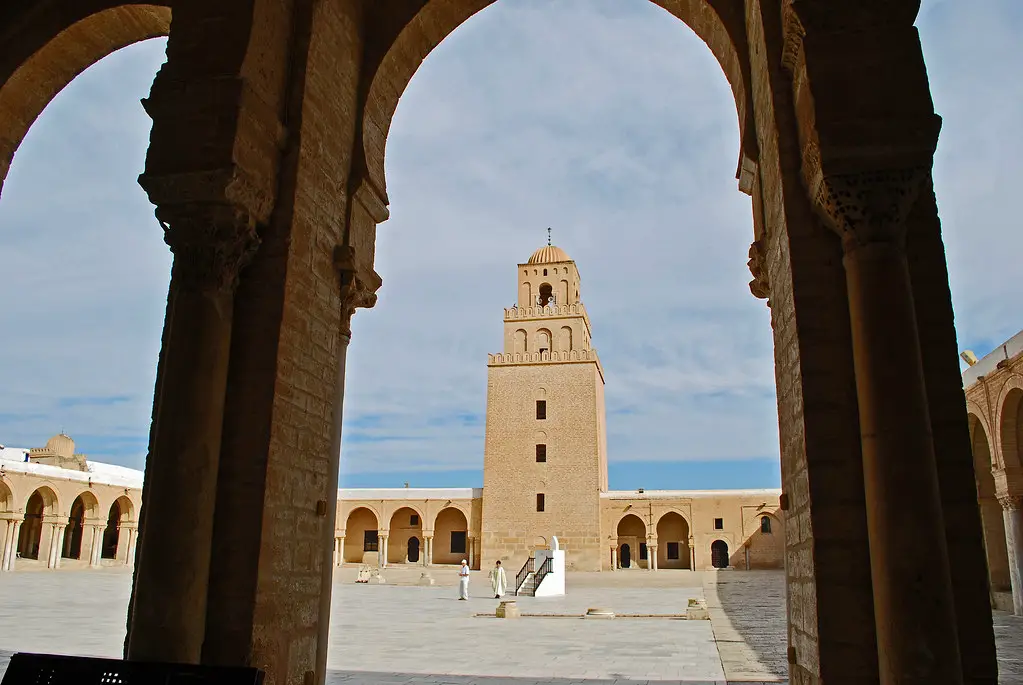
The Mosque of Uqba is a historic mosque located in Kairouan, Tunisia. It is considered one of the holiest Islamic sites in North Africa.
What to see or do: Visitors can witness the impressive architecture of the mosque. The courtyard of the mosque is surrounded by a pillared arcade crowned with a massive dome.
The main prayer hall is decorated with intricate calligraphy and features a mihrab (a niche in the wall that indicates the direction of Mecca).
Don’t miss: Don’t miss the impressive minaret of the mosque. It stands 31 meters tall and is the oldest surviving minaret in the Islamic world.
Visitors can climb to the top for stunning views of Kairouan and the surrounding landscape.
Insider travel tips: Plan to visit the mosque in the early morning or late afternoon to avoid the midday heat. Friday is the holiest day of the week for Muslims, so it may be crowded on this day.
Dress modestly and remove your shoes before entering the mosque.
Visitors should also hire a guide or join a tour to learn more about the history and significance of the site.
21. Fort of Kelibia
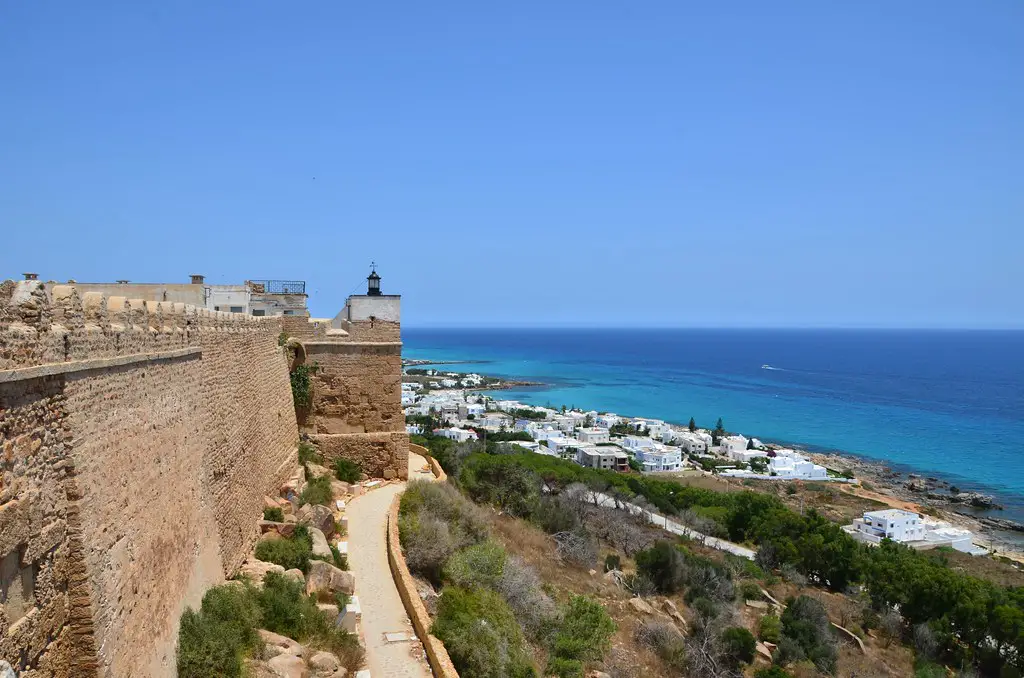
A historic fort located on a hill overlooking the Mediterranean Sea in Kelibia, Tunisia.
What to see or do: Visitors can explore the fort’s rooms, walkways, and terraces to admire the impressive views of the sea and the surrounding landscape.
The fort also houses a small museum showcasing traditional Tunisian crafts, tools, and clothing.
Don’t miss: Climbing to the upper level of the fort’s tower for panoramic views of the sea and the town below.
Insider travel tips: – Wear comfortable shoes as the fort involves some walking and stair climbing.
22. Kerkouane
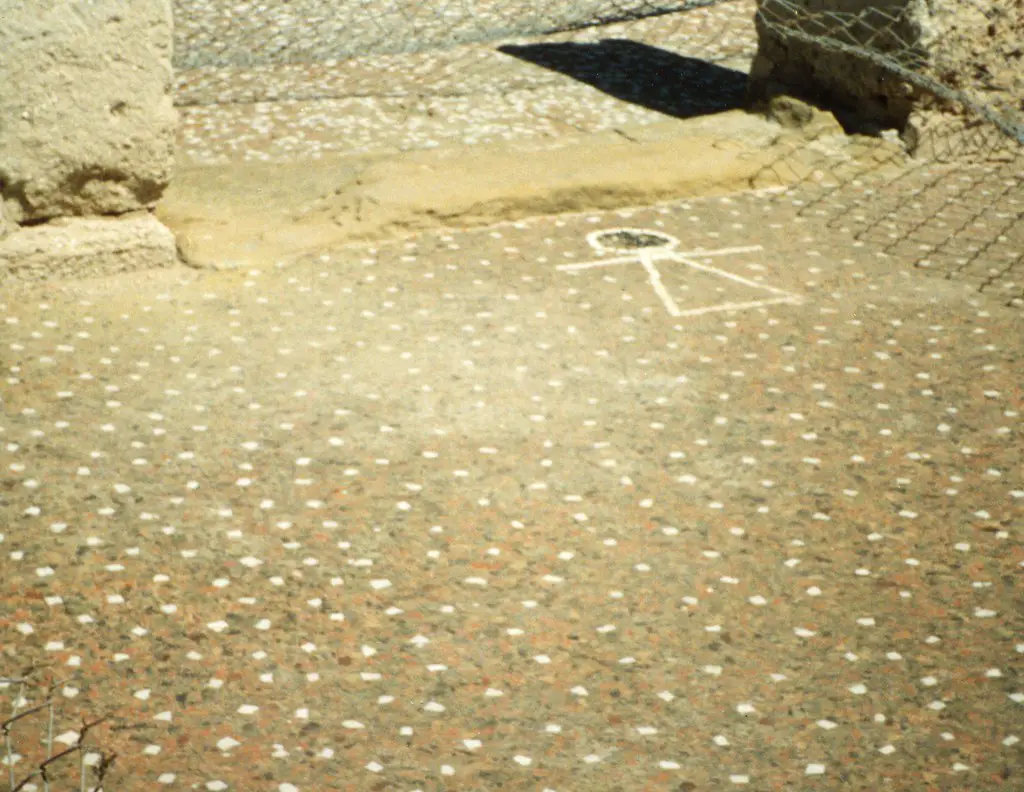
Kerkouane is an ancient Punic city located in the northeast of Tunisia.
What to see or do: Explore the ruins of the city and marvel at the well-preserved remnants of the Punic civilization. Admire the intricate mosaics and architecture that showcase the ingenuity of the ancient city.
Don’t miss: The theater, which has a well-preserved stage and seating area. Also, visit the House of the Priest, which features an impressive mosaic floor depicting the Greek god Dionysus.
Insider travel tips: Rent a local guide who can provide in-depth information about the history and significance of the ruins.
23. Palace Dar Nejma Ezzahra

A luxurious palace located outside the medina of Marrakech, built for the purpose of hosting events, weddings, and conferences.
What to see or do: Enjoy the breathtaking formal gardens, stroll around the courtyard, admire the ornate architecture, and visit the lavish interiors. Attend a private event or book the palace for your special occasion.
Don’t miss: The stunning pool area, the beautifully decorated bedrooms, and the rooftop terrace with stunning views of the Atlas Mountains. The palace is also equipped with modern amenities such as air conditioning and Wi-Fi.
Insider travel tips: Book well in advance if you are interested in hosting an event at the palace. The palace can accommodate up to 180 guests and the catering can be arranged according to your preferences.
For a more relaxed experience, stay overnight at the palace and enjoy the tranquility of the private gardens away from the hustle and bustle of the medina.
24. El Ghriba Synagogue
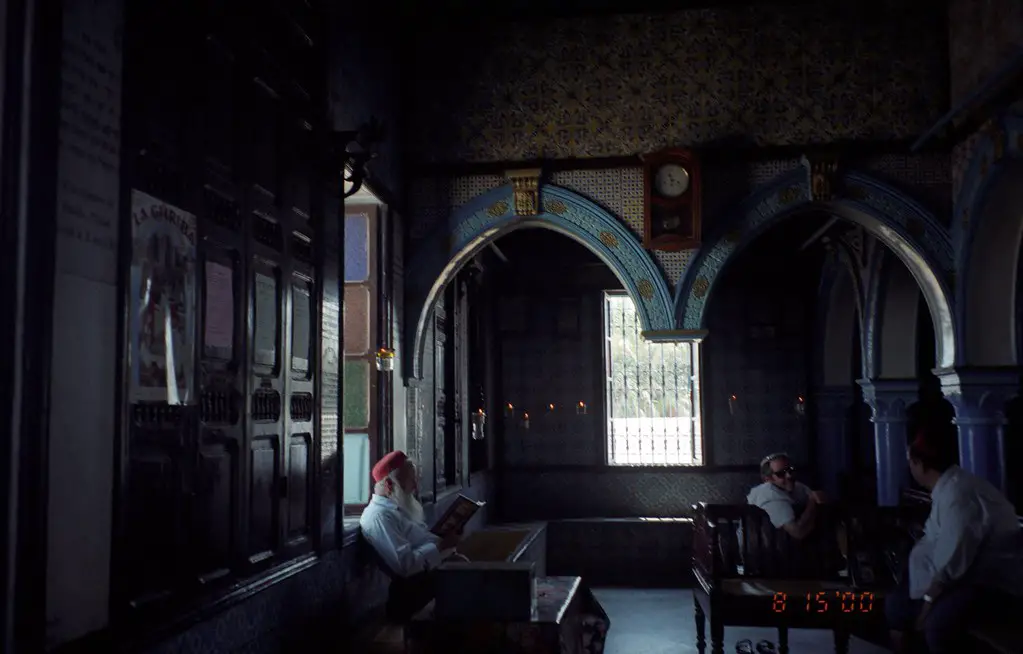
A historic Jewish synagogue located in Djerba, Tunisia.
What to see or do: Visitors can explore the beautifully designed architecture of the synagogue, view historic artifacts and visit the site of the tomb of Rabbi Meir Baal Haness.
Don’t miss: The annual Jewish pilgrimage to the synagogue during the holiday of Lag Ba’Omer, where thousands of people from around the world gather to celebrate and pray.
Insider travel tips: Dress appropriately when visiting the synagogue as it is a holy site. Some areas may be restricted to visitors during certain times.
It’s best to check with local guides or the synagogue staff before visiting.
25. Béja Medina
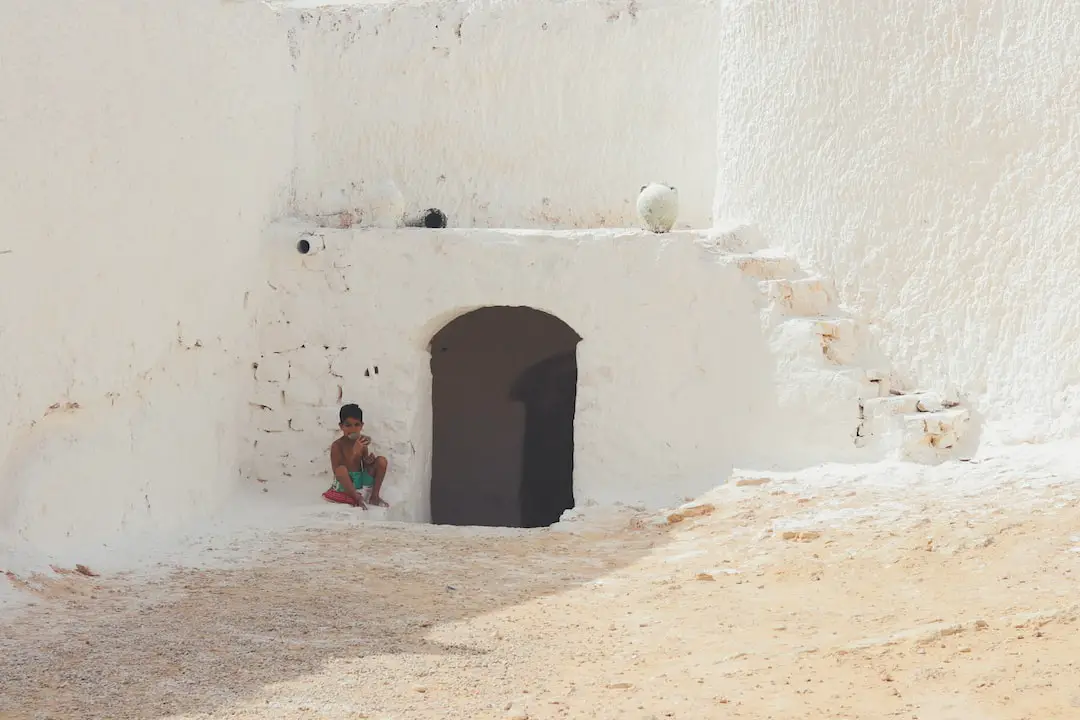
What to see or do: Explore the narrow streets lined with white-washed buildings and blue doors, visit the traditional souks and markets to shop for local crafts and goods, admire the historic architecture of the mosques and fortresses, and take in the panoramic views of the city from the hilltop Kasbah.
Don’t miss: The 9th-century Aghlabid Fort, the Great Mosque, the Dar Taieb Cultural Center, and the Mosaics Museum.
Insider travel tips: Wear comfortable shoes as the streets can be uneven and hilly. Be respectful of the local customs and dress modestly.
Bargaining at the markets is common so be prepared to haggle for the best price. The best time to visit is during the cooler months from November to April.
26. Sbeitla
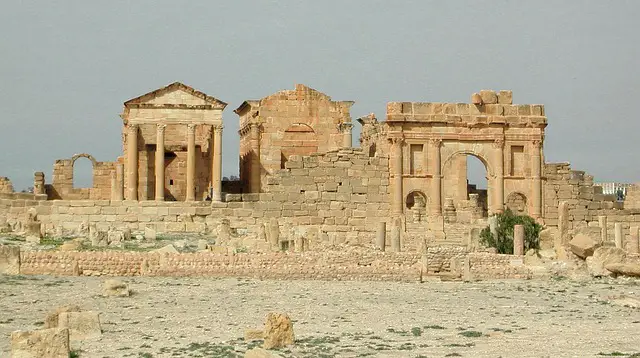
Sbeitla is a well-preserved ancient Roman city located in central Tunisia.
What to see or do: Explore the impressive ruins of the ancient city, including the Roman forum, temples, basilicas, and triumphal arch. Admire the intricate mosaic floors and well-preserved remains of the ancient buildings.
Don’t miss: The impressive Amphitheatre, which could seat up to 7,000 people, and the stunning Arch of Diocletian, which was erected in 295 AD to commemorate the emperor’s visit.
Insider travel tips: Visit Sbeitla early in the morning to beat the crowds and the heat. Wear comfortable shoes and bring plenty of water as the site is quite large.
Hire a local guide for a more in-depth understanding of the history and architecture of the ruins.
27. Dar Lasram

Dar Lasram is a beautiful traditional Tunisian mansion converted into a museum dedicated to Tunisian heritage and history.
What to see or do: Visitors can explore the stunning architecture and interior design of the mansion, including its intricate tile work, carved wood, and beautiful courtyards.
The museum includes exhibits on various aspects of Tunisian life, such as traditional crafts, music, and clothing.
Don’t miss: One of the highlights of Dar Lasram is the magnificent view from the rooftop terrace, offering stunning views over the medina and the city beyond.
Insider travel tips: It’s worth seeking out a knowledgeable guide to help you get the most out of your visit and learn about the rich history of the mansion and its collections.
Also, be sure to bring comfortable shoes as the floors are uneven and there are many stairs to climb.
28. Museum of Islamic Art
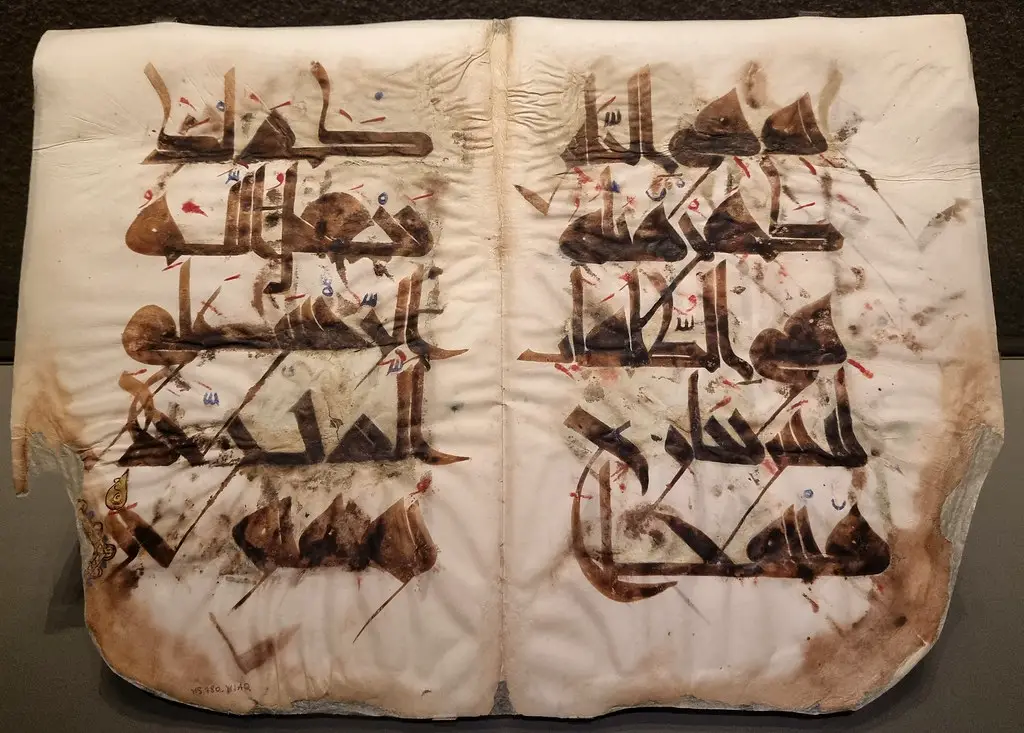
The Museum of Islamic Art is an iconic landmark in Doha, Qatar, dedicated to showcasing the rich heritage of Islamic art from around the world.
What to see or do: Explore the extensive collection of Islamic art spanning over 1,400 years. Admire the intricate calligraphy, ceramics, textiles, and metalwork.
Take a stroll along the scenic waterfront promenade and enjoy a cup of coffee at the museum’s cafe.
Don’t miss: The stunning main hall with its spiral staircase and breathtaking views of the Persian Gulf. The temporary exhibitions which feature contemporary Islamic art from emerging artists.
The museum’s gift shop that sells unique, handmade artisanal items.
Insider travel tips: Visit the museum early in the morning to avoid the crowds and beat the heat. Take a free guided tour to learn about the museum’s history and collection.
Plan your visit to coincide with the daily call to prayer, as the museum is designed to amplify the beautiful sound of the azan.
29. Mosque Sidi Youssef
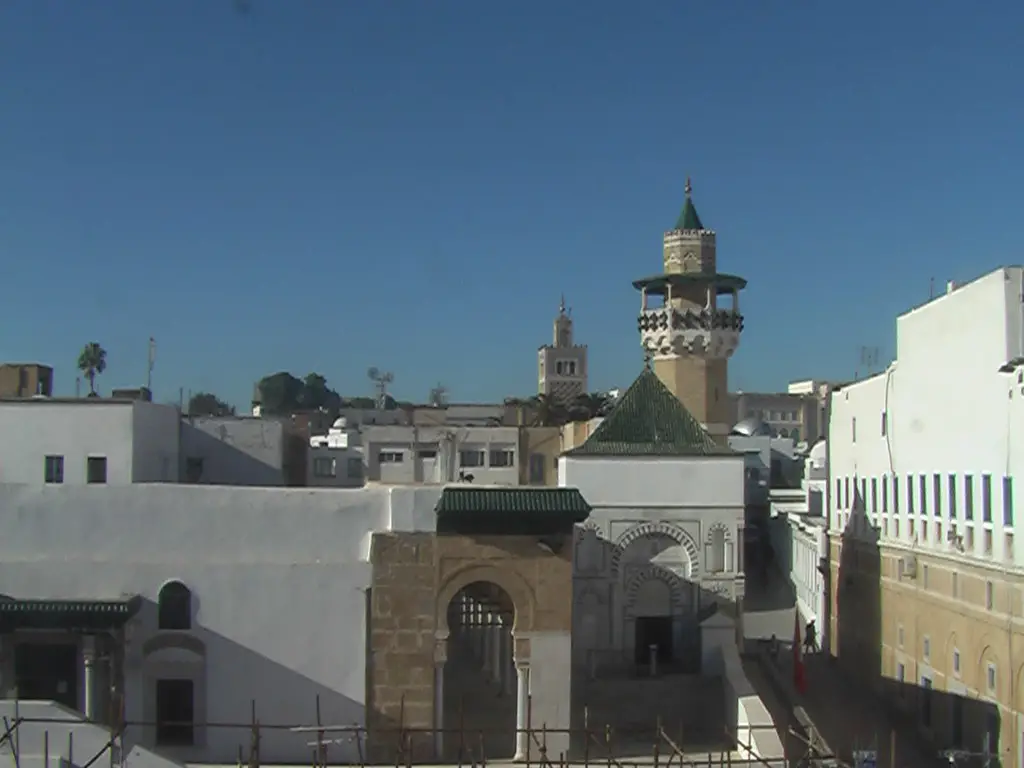
A historic mosque located in the city of Marrakech, Morocco.
What to see or do: Marvel at the stunning architecture of the mosque, which dates back to the 16th century. Admire the intricate detail in the tiles and woodwork throughout the mosque’s interior and exterior.
Take in the peaceful and serene atmosphere that the mosque provides.
Don’t miss: The beautiful courtyard of the mosque, which features a central fountain and lush greenery. Also, be sure to check out the intricate geometric patterns in the zellige tiles throughout the mosque.
Insider travel tips: As the mosque is an active religious site, visitors are asked to dress modestly and take their shoes off before entering.
It’s also recommended to visit early in the day when it’s quieter and less crowded.
30. Ancient city of Hadrumetum
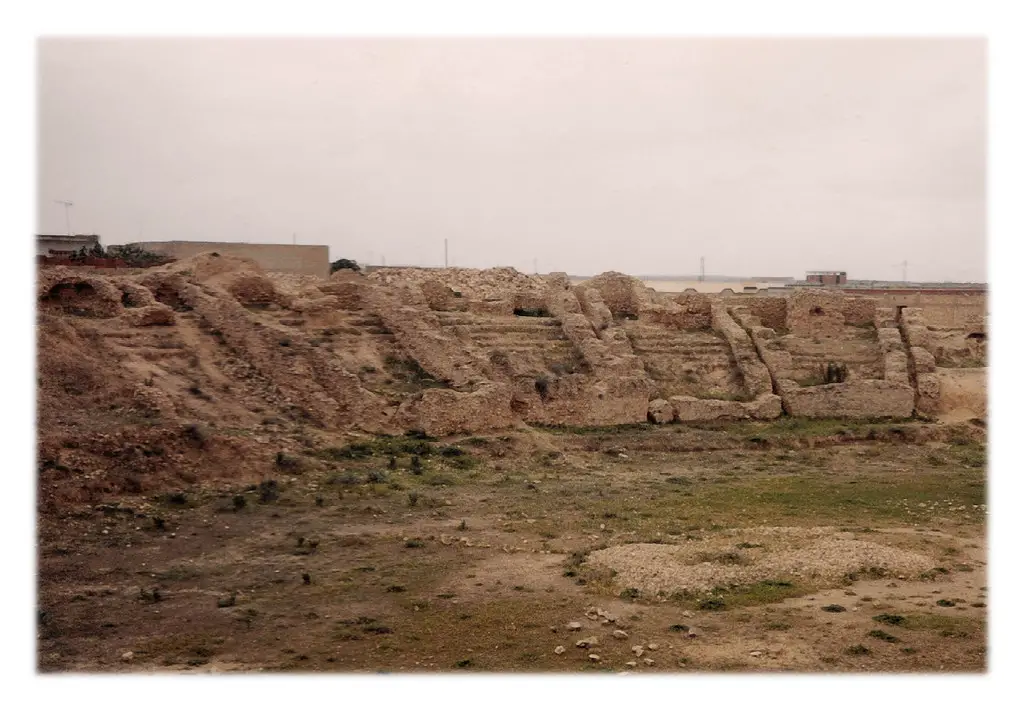
A once-thriving ancient city in Tunisia, now known as Sousse.
What to see or do: Explore the UNESCO-listed Medina of Sousse, which is the heart and soul of the city. Admire the grandeur of the Ribat of Sousse, one of the oldest Islamic monuments in Tunisia.
Visit the Archaeological Museum of Sousse, which displays artifacts from the Punic, Roman, and Islamic periods.
Don’t miss: The Great Mosque of Sousse, dating back to the 9th century, and the catacombs of the Good Shepherd, a network of underground tombs adorned with frescoes.
Insider travel tips: – Visit Hadrumetum early in the morning or late in the afternoon to avoid the crowds and the heat.